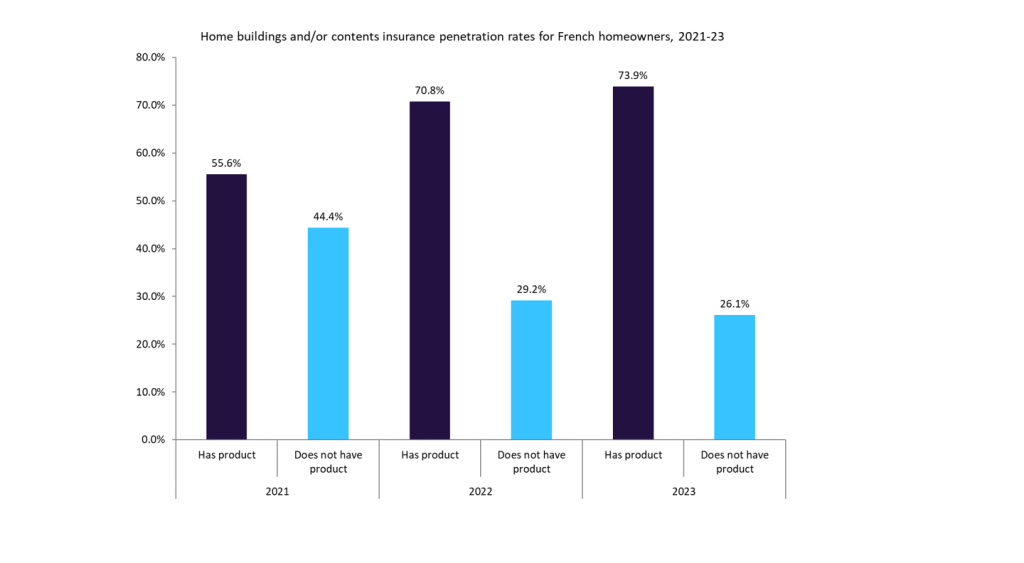Regulatory and reporting changes have towered above other challenges facing insurers in South Africa, according to a study undertaken for PricewaterhouseCoopers (PwC) by Brian Metcalfe, associate professor in the Business School at Brock University, Canada.
Published in June 2012, the study included a survey of 30 of the largest life, general and foreign reinsurance companies in South Africa.
Based on survey results, Metcalfe noted that regulatory and reporting changes towered above other challenges facing insurers. Indicatively, ranked by survey participants, regulation and reporting changes combined, scored double the next-biggest challenge they face: the uncertain economic environment.
Indicatively, ranked by survey participants, regulation and reporting changes combined, scored double the next-biggest challenge they face: the uncertain economic environment.
Overall, the major regulatory change facing insurers in South Africa is Solvency Assessment and Management, South Africas equivalent of the European Unions (EU) Solvency II regulatory regime. Also underway is preparation for the Treat Customers Fairly regulation.
In their final implementation phase also this year are the Binder Regulations governing the relationship between insurers and brokers, and the Financial Advisory and Intermediary Services Act regulating financial advisers.
How well do you really know your competitors?
Access the most comprehensive Company Profiles on the market, powered by GlobalData. Save hours of research. Gain competitive edge.

Thank you!
Your download email will arrive shortly
Not ready to buy yet? Download a free sample
We are confident about the unique quality of our Company Profiles. However, we want you to make the most beneficial decision for your business, so we offer a free sample that you can download by submitting the below form
By GlobalDataSouth africas solvency ii
In terms of cost and the amount of effort required, Solvency Assessment and Management (SAM), has so far presented the biggest challenge.
In all respects the format of SAM is a carbon copy of the EUs Solvency II regulatory regime, says Peter Dempsey, deputy CEO of the Association for Savings & Investment South Africa (ASISA).
ASISA is an industry body which includes life insurers and fund management firms.
In keeping with Solvency II, SAM is focused on a change from regulationbased on a standard capital requirement, applied to all insurers to a principles-based approach that makes effective risk management based on each insurers unique characteristics the overriding objective.
SAM has the three pillar approach as applied under Solvency II: Pillar 1 focuses on capital adequacy and incorporates a minimum capital requirement (MCR) which if breached would require an insurer to cease operating and a solvency capital requirement (SCR).
If an insurers capital falls below SCR, but is still above MCR the regulator, the Financial Services
Board (FSB), would take action. The levels at which MCR and SCR will be set has yet to be finalised, said Dempsey.
Pillar 2 relates to risk management systems, supervision of these systems and controls. Meanwhile, Pillar 3 aims at ensuring effective disclosure by insurers of their financial standing, publicly and to regulators.
This includes governance, risk exposure and the methods used to value assets and liabilities.
Is SAM needed?
Many South African insurers question the need for SAM, says Dempsey. They argue South African insurers are well capitalised and none experienced difficulty during the financial crisis, he says. But as a G20 and Financial Stability Board member South Africa is obliged to implement Solvency II-type regulation.
I believe SAM is needed, says Ian Kirk, CEO of Santam, South Africas largest general insurer. But we did not need all the bells and whistles of the three pillar structure.
The focus should only have just been on capital requirements.
Work on implementing SAM began in 2009 and comes at a hefty cost. According to PwC, larger life insurers estimate costs as between ZAR200m ($25m) and ZAR800m.
Larger general and health insurers estimate costs at between ZAR50m and ZAR100m. The FSB and national treasury have about 400 people working on SAM, says Dempsey.
In preparation for SAM, South African insurers have already undertaken one quantitative impact study (QIS) with a further two to follow. The first QIS was run in 2011 and saw 90% participation by insurers based on by premium income. The secondQIS is now underway with the third set for 2013.
Under SAM insurers have a choice of using a standard model or their own internal model, says Dempsey.
Many insurers, he adds, are using the standard and internal models in the second QIS to assess which will result in the lowest capital requirement.
For general insurers certain capital requirement elements of SAM came into force on January 1 2012 as an interim step, says Kirk.
This has seen the old minimum capital requirement – 25% of net premium income – replaced by capital requirements differentiated for each insurer using SAM criteria.
Because of Santams size and diversity it has benefitted from the change, says Kirk.
Based on Santams internal model its SCR is 23% of net premium income. We have always held between 35% and 45%, says Kirk.
But because of their limited business scope, monoline general insurers have been hit hard. Some cant meet their capital requirements, says Kirk. For many, capital requirements have increased by three to four times and in one case by six times.
A number of monoline insurers, he says, have resorted to solvency relief deals with reinsurers. The alternative could be to shut up shop.
While final capital adequacy levels have yet to be determined, Kirk sees Santams SCR being between 23% and 30%. For other general insurers it will probably be far higher, says Kirk.
Foreign reinsurers who meet the vast bulk of South Africas reinsurance requirements are likely to do very well out of the situation, notes Kirk. Dempsey says the insurance industry is currently in negotiations with the FSB and treasury to resolve the danger of many insurance products becoming too expensive or disappearing altogether.
To their credit, the FSB and treasury are listening and have tempered their view [on capital requirements], notes Dempsey. Concerns that SAM will stifle growth in the number of insurers serving the microinsurance segment are also being addressed.
For companies offering up to about ZAR500 000 life cover per policy and up to about ZAR100 000 short-term cover the initial capital requirement could be reduced to as low as ZAR1.5m, says Dempsey.
At present the minimum capital required to start a life insurance company is ZAR10m and for a general insurance company ZAR5m.
Kirk notes that a version of SAM with less onerous regulatory requirements will be introduced for micro-insurance products in about 18 months.
Tracking solvency II
Full adoption of SAM was originally scheduled for January 2013 but has been extended to January 2014.
The big question is: would South Africa go ahead with SAMs full implementation in 2014 if Solvency II implementation was postponed?
Given political wrangling over Solvency IIs implementation a further postponement appears a distinct possibility.
My view is that if Solvency II is delayed South Africa will not proceed with SAM in 2014, says Dempsey.
Dempsey believes there is a distinct possibility adoption of Solvency II will be delayed again and even a bpossibility it will be abandoned completely.
Taking a very different view, Kirk sees no chance South Africa will delay or abandon SAMs implementation.
I dont see them [FSB and national treasury] extending the deadline beyond January 2014, says Kirk.
They are determined to go ahead. For insurers delay would just add to costs, he adds.
Health insurers woes
For insurers offering health insurance products SAM has the same financial implications it does for general insurers.
But health insurance providers face another challenge in the form of the pending Insurance Laws
Amendment Act.
One proposal under the act responds to a call by the Council for Medical Schemes (CMS) to prohibit health insurers from selling products deemed to compete with medical schemes.
Medical schemes are non-profit organisations but are managed by separate companies which are paid fees for their services.
Medical schemes fear healthy people will opt out of their schemes and buy very specific health insurance products in their place, explains Gerhard Dixon, a KPMG director and its national insurance industry leader in South Africa.
Under the proposed legislation all health insurance products sold by health insurers will have to be approved by the FSB and CMS.
I think this will kill the medical insurance sector, says Kirk. He believes the only insurance product that may survive is gap cover which pays the difference between actual medical expenses incurred and those covered by medical schemes.
An even bigger challenge
Another major regulatory change facing South African insurers is the Treat Customers
Fairly (TCF) regime. Some industry players see it as an even bigger challenge than SAM
First mooted in 2010, TCF regulation is due to be implemented in 2014, accordingto Leanne Jackson, head of the FSBs TCF initiative.
The industry is getting to grips with implementation, says Jackson.
Though no major milestones have been reached, we are making good progress.
The TCF initiative lays down six outcomes insurers will have to adhere to. These outcomes, says Jackson, have been copied virtually verbatim from the UK Financial Services Authorities (FSA) TCF regulations which came into force in 2009.
The FSB engaged with the FSA in the implementation of TCF regulation in South Africa, she
notes.
The FSBs TCF, Jackson continues, will be backed by enforcement powers providing a credible deterrent to misconduct.
This will include naming and shaming errant companies and, potentially, fines and suspending
or withdrawing of licenses. TCF will have a profound impact on the industry, noted Metcalf in the PwC study.
While many [survey] participants indicate that they have to embrace consumerism, they acknowledge that a major cultural shift is required and this will take time.
Some participants, he added, speculated that TCF may turn out to be the most challenging and most costly of all the new regulations.
Echoing this, Rutherford says: I think TCF will be a massive challenge and a very expensive one to implement.
The FSBs stance on TCF, he adds, is one where everything is stacked up in favour of the consumer.
The end result could be that some products become unviable for insurers to offer, he warns.
SAM is an explicit piece of regulation while TCF is a much more subjective issue, says Dempsey. How do you define fairly? TCF is also a first step towards adoption of a twin peaks regulatory structure in South Africa. At present insurers are licenced and regulated entirely by the FSB.
Under the new regime, industry players see the FSB becoming solely responsible for enforcement of TCF regulations. Licensing and regulation of insurers would become the South African Reserve Banks responsibility.
More change on the way
SAM and TCF are not the last pieces of major new regulation South African insurers will have to cope with.
Heading their way are changes to tax regulation flowing from the introduction of SAM and International Financial Reporting Standards (IFRS) Four, Phase II.
The IFRS Four, Phase II standard is a joint insurance accounting initiative of the International Accounting Standards Board and US Financial Accounting Standards Board and is tentatively due to be implemented in 2015.
Against the SAM and accounting standards background, the South African national treasury has begun researching potential tax amendments for insurers.
It has yet to announce definite steps likely to be taken. At this stage, market observers do not anticipate changes will impact the tax rate applicable to insurers shareholders portion of profits.
The rate is currently 28%, the same rate as applied to all companies.
However, in a recent study KPMG pointed to potentially significant changes in the calculation of profits.
For example, noted KPMG, there could be a change in the actuarial basis for measuring policyholder liabilities and, hence, calculation of shareholder profits.
With SAM and TCF underway, sweeping IFRS accounting standards changes looming, and a potential shake-up of tax legislation coming, 90% of insurers surveyed by PwC expect their regulatory burden to increase substantially over the next three years.
Also concerning is that three quarters of survey participants believe the heavy burden of regulation is dampening risk appetite and stifling growth.
All this new regulation comes at a substantial cost to the insurance industry and its also us paying for all the FSBs extra costs, says Kirk. The big danger in coping with all this new regulation is that you lose sight of running the business.







